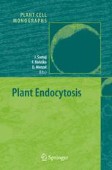Search
Search Results
-
Comparative Analysis of Biological Models used in the Study of Pollen Tube Growth
The mechanisms of pollen tube growth have been studied in a wide variety of plant species. Since the 1990s, with the explosion of molecular...
-
Gametic Embryogenesis in Triticum: a Study of Some Critical Factors in Haploid (Microspore) Embryogenesis
This review of embryogenesis from microspores in two types of wheat examines the influences of various procedures used to induce and produce...
-
Energy metabolism, anti-oxidant defense and aging in Caenorhabditis elegans
Food restriction and impaired gene function by mutation or RNAi treatment can extend the lifespan of Caenorhabditis elegans considerably. In contrast...
-
Do green plants age, and if so, how?
Time-dependent ageing-like processes in green plants are discussed and compared to gerontological changes in animals and other organisms. The...
-
Molecular responses of higher plants to dehydration
A massive amount of data has been accumulating on the molecular responses of plants to water deficit. In plants, dehydration activates a protective...
-
Heavy metal signalling in plants: linking cellular and organismic responses
Heavy metals are required in plants as essential micronutrients or act as toxic compounds. How do plants perceive heavy metals and which signalling...
-
Introduction
Everywhere in the world, environmental stresses represent the most limiting factors for agricultural productivity. Besides plant-specific endogenous...
-
Conditional senescence in prokaryotes
Bacteria are immortal in the sense that their capacity for reproduction appears limitless as long as the environment supports growth. However, this...
-
Role of subcytotoxic stress in tissue ageing
Most commonly stress-induced premature senescence (SIPS) is defined as the long-term effects of subcytotoxic stress on proliferative cell types,...
-
Mammalian and bird aging, oxygen radicals, and restricted feeding
In this chapter, the relationship of aging with oxidative stress is reviewed. Endogenous tissue antioxidants do not determine aging because they...
-
Mitochondria, metabolism, and aging in yeast
Quantitative and qualitative changes in metabolism take place when the lifespan is extended in yeast either by genetic or nutritional manipulation....
-
Yeast as a model for ageing and apoptosis research
Apoptosis is a form of programmed cell death with a crucial role in health and disease in metazoans. Recent findings demonstrate the existence of an...
-
Molecular genetics of genotoxic stress signalling in plants
Cells are under constant threat by endogenous and exogenous factors affecting DNA integrity. In response, complex signalling networks are activated...
-
Oxidative stress signalling
Oxidative stress arises from an imbalance in the generation and removal of reactive oxygen species (ROS) within cells. ROS are produced during...
-
Molecular Dissection of the Clathrin-Endocytosis Machinery in Plants
In the last few years, the endocytic vesicular uptake in plant cells has gained increasing significance in several physiological processes....
-
Dynamin-Related Proteins in Plant Endocytosis
Over the past decade, it has become evident that multiple endocytic pathways operate in eukaryotic cells, and several of these are dependent on...
-
In Vitro Culture of Arabidopsis Embryos
Arabidopsis thaliana is currently the most important model organism for basic molecular plant research. It is also a favourable model for...
-
Mode of Action of Plant Hormones and Plant Growth Regulators During Induction of Somatic Embryogenesis: Molecular Aspects
Plant hormones play critical roles in the establishment of somatic embryogenesis. During this process, somatic plant cells reverse their state of...
-
Somatic Embryogenesis in Pinus nigra Arn.: Some Physiological, Structural and Molecular Aspects
In this chapter we summarize different aspects of Pinus nigra somatic embryogenesis including initiation, maintenance and maturation on both solid...
-
The Microtubular Cytoskeleton in Pollen Tubes: Structure and Role in Organelle Trafficking
Microtubules are a fundamental component of plant cells, in which they achieve many critical functions. In pollen tubes, however, their specific...
